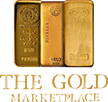This article addresses the characteristics, pros, and cons of graded bullion coins. It will conclude with a verdict as to whether graded bullion coins are wise investments or just novelty items.
This is the third part in a 3-part series that addresses: 1) bullion coins and bars 2) collectible coins 3) graded bullion coins.
As I described in Part I of this series, the term “bullion” generally refers to coins or bars whose value is linked to the spot price. The graded bullion coins carry a higher premium, because their condition is verified by a third-party grader.
Graded bullion coins have grown in popularity over recent decades. The emergence of the top coin grading agencies, the Numismatic Guarantee Corporation and the National Coin Grading Service, have played a central part in the growth of this market. The most popular graded bullion coins in the USA are the coins that are minted by the United States Mint, such as the Eagles and the Buffaloes.
Dealers use a combination of three factors to justify the higher premium of graded bullion: 1) the high grade of 70 or 69 by a top grading agency; 2) whether the coins are a First Strike; 3) a signature on the label of the coin by a well-known politician or coin designer.
High Grading Scale
As I mentioned in Part 2 of this series, the highest grade on the Sheldon Scale is 70. Most of the newly minted Brilliant Uncirculated coins will come back a perfect 70. However, a lower percentage of them will grade at perfect 70 than collector coins like the Proof (PF) coins or the commemorative coins. There is greater effort to perfect collector coins like the 2009 Ultra High Relief coin, which is a collectible. There is a legitimate claim that modern bullion coins in a perfect Mint State 70 are lower in number than the commemorative coins. Graded bullion can be a wise investment.
Early Strikes
Dealers charge a higher premium for bullion coins when there is something distinct that might make the coin more valuable upon its release. A coin might be a “First Strike” or “Early Strike”, meaning that it was sent over to a third-party grader, like NGC, within the first 30 days of its release. A 2019 Gold American Eagle MS70 is listed at $2106 and the First Strike for that year is listed at $2181. The MS70 Gold Eagle for the year 2020 is at $2106 and the First Strike is at $2356.
Signatures
Coins with the signature of well-know engravers and politicians on their label can increase the asking price. The key here is to verify the value of the coin with a reliable source like The Official Red Book or the PCGS Price Guide. For example, PCGS has the 2016 Gold American Eagle (30th Anniversary) with a Mint State 70 grade valued at $2,485. They have that same coin with the signature of former Mint Director Ed Moy on the label at $6,100. Unless the value can be verified by a third-party like PCGS or NGC, you might want to hold off on signed bullion coins with a high premium.
Availability
Modern bullion coins with a high grade are highly available, especially in the year they are issued. Today’s technological advances in the minting process yields a much higher frequency of perfect coins. Furthermore, the coins are never circulated like the pre-1933 coins that were actually used as money. Additionally, many coins are shipped directly to the grader, which cuts down the chance of damage to the coin. They are not considered rare, however the years that have a low mintage will sell at a higher price.
Profit Potential
The graded bullion coins can have very strong profit potential. This is largely contingent on the mintage figures. For example, the 1996 $50 Gold American Eagle had a mintage of only 189,148 coins. PCGS has the asking price of that coin with a MS70 grade at $11,500. In contrast, there were 1,468,530 $50 Gold American Eagles minted for the year 1998. The PCGS Price Guide has that coin listed at only $2,617.
High premiums
Graded bullion coins come with a premium significantly higher than ungraded bullion coins. Currently the PCGS Price Guide has the 2022 $50 Gold American Eagle MS70 trading at $2,600. The 2022 Gold Eagle is the first full year for the new Jennie Norris reverse design. Two thousand six hundred dollars is currently a 54% markup beyond the spot price of $1,682. When the 2023 Gold Eagles become available in a perfect 70 grade, that would certainly be the time to buy them.
Some buyers choose to buy graded bullion coins that are essentially novelties with hopes that they will perform like collectibles. With a mark-up of 300%-500%, most buyers will never make their money back. The coins are often signed by a notable person in the world of precious metals, and that is the true value of the coin for the buyer. If that is not enough, the buyer will certainly be disappointed.
Liquidity
Graded bullion coins are liquid but not nearly as liquid as collectibles or bullion. With graded bullion, you should easily be able to liquidate through the dealer from which you bought. There are a number of local and online dealers that would be willing to buy your graded bullion. When it comes to liquidity, the collectibles have rarity and history working for it. Bullion bars and ungraded coins have the low premium working for it on the liquidation side. For example, The Gold Marketplace offers 97%-100% of spot on the liquidation side for bullion to our clients.
With liquidating the graded bullion coins there is much more gray area. It is important to have reasonable expectations, which may be closer to the market price instead of what you paid for them. The process is complicated further if the seller expects a higher selling price. If an exorbitant price is merely based on a signature on the label, they may never be able to liquidate for anywhere near what they paid.
So, are graded bullion coins wise investments or just high-priced novelties? This answer to this question will depend on the premium that was paid and the authenticity of the grading.
Again, the best buying strategy for graded bullion coins is to buy as early as you can in the year they were minted. Most years you will not know in advance if it will be a low mintage year. However, if a coin ends up being a year with a low mintage, the coin will fetch a very high price with a perfect 70 grade from NGC or PCGS.
Acquire these coins as early in the year as possible, with a perfect 70 grade. As an investor, I would suggest paying 20%-50% over gold spot price. According to the PCGS Price Guide, the increase in the asking price tends to be in that range every year. Once you begin to pay 100% over the spot price you significantly decrease the chances of seeing a profit in your lifetime. If you pay 300 or 500% over the spot price, you have likely assured yourself that you’ll never see a profit. Again, this is OK if you bought as a novelty and not as an investment.
1) make sure that the coins are graded by either the Numismatic Guarantee Corporation (NGC) or the Professional Coin Grading Service (PCGS).
2) if you are buying as an investor, avoid coins that are more than 50% over the spot price.
3) buy the coins as early as you can within the year they were minted.
No matter what you’ve done in the past, if you follow those 3 suggestions, graded gold bullion coins will likely perform well for you.
If you have more questions about the market or investing in physical precious metals, reach out to us anytime at 800-960-6280, and we will gladly answer your questions and concerns.
We appreciate you and we are looking forward to working for you.
God bless you,
Cullen Banks
The Gold Marketplace, LLC

